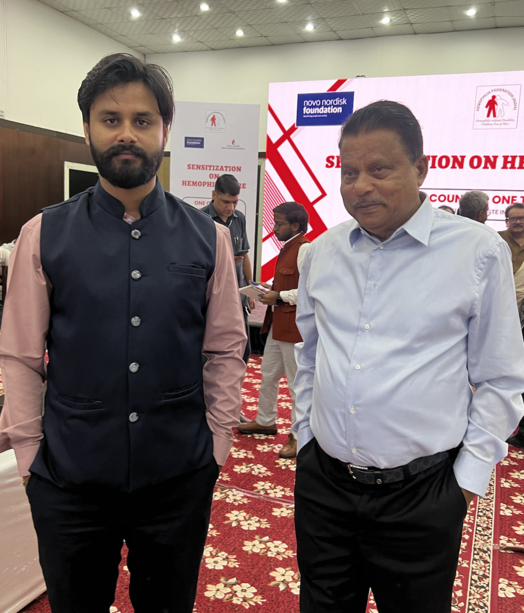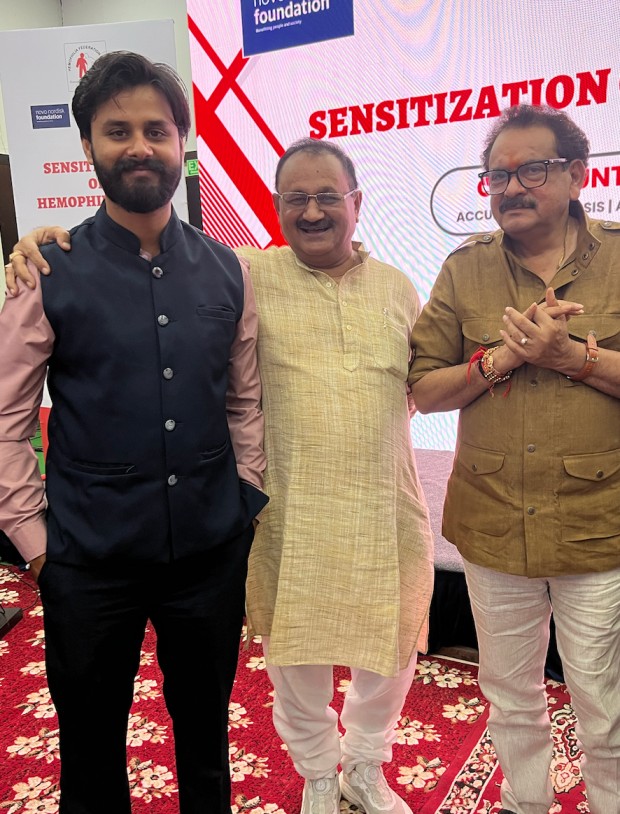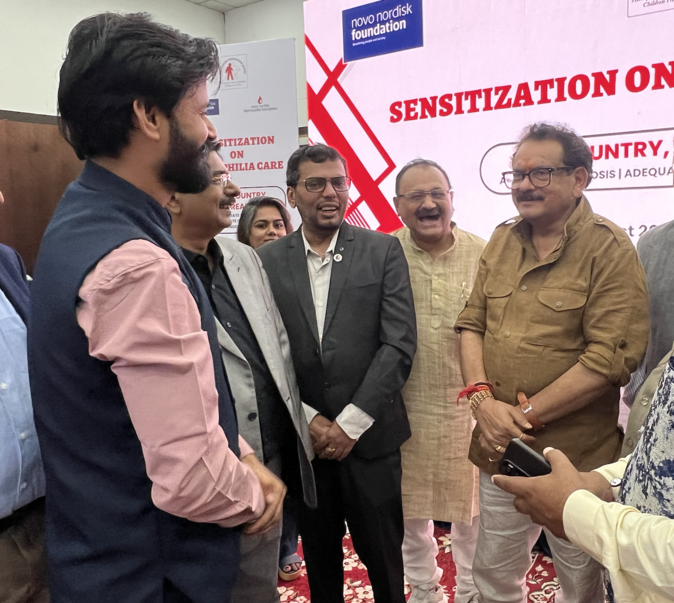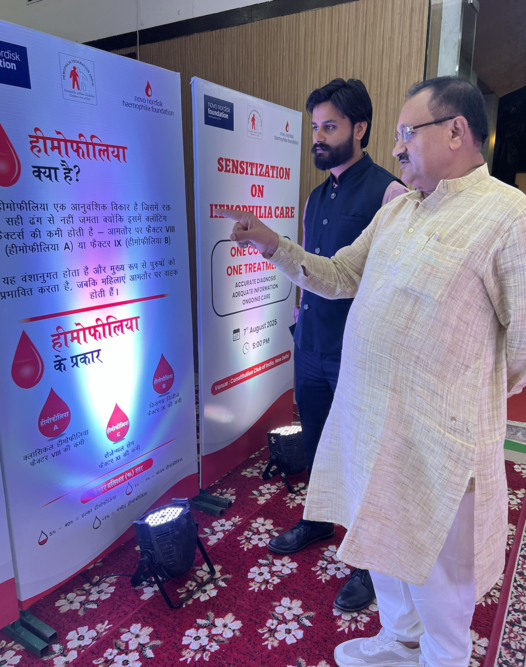Context: Health, Policy and Community Convergence
The event — convened to raise awareness on thalassemia and hemophilia, two hereditary blood disorders with significant public-health implications — drew clinicians, patient advocates, policy makers, and civil society leaders. The presence of senior public figures amplified the dialogue from clinical care to health systems, policy planning and community mobilization. Dr. Shivam Mishra’s participation signalled a cross-sectoral commitment: that wellness traditions like yoga can complement biomedical care pathways and support patient resilience.
A Meeting of Minds: Dignitaries and Deliberations
Prof. S. P. Baghel, holding the Animal Husbandry portfolio, reflected on the broader implications of community health and nutrition programs, underscoring rural outreach and screening. Former Rajnandgaon MP Pradeep Gandhi highlighted the importance of early diagnosis and social support networks for families affected by hereditary blood conditions. Mukesh Dalal reiterated the need for workplace-friendly healthcare accommodations for affected individuals, while Rajya Sabha MP P. V. Abdul Wahab emphasised inclusive policy frameworks that safeguard vulnerable communities.
Within this confluence of perspectives, Dr. Mishra advocated for the integration of structured yoga therapy modules into patient care plans. He proposed pilot programs that partner tertiary hospitals, community blood centres, and local yoga institutions — thereby ensuring accessible, culturally appropriate, and evidence-based support for patients and caregivers.
Yoga as Complementary Therapy: Evidence and Application
Dr. Mishra outlined specific domains where yoga can provide measurable benefits: stress and anxiety reduction through pranayama and guided relaxation; improved musculoskeletal resilience with tailored asana sequences; and enhanced breathing efficiency that supports overall physical endurance. For hemophilia patients — where controlled movement, education on safe postures, and physiotherapy coordination are paramount — Dr. Mishra emphasised carefully supervised, individualized yoga protocols administered by trained therapists.
He further argued that for thalassemia — a condition frequently managed through transfusion and chelation therapy — complementary practices that mitigate treatment-related fatigue, strengthen respiratory function and support mental health could reduce hospital readmission rates and enhance life quality. Linking traditional practice with contemporary research, Dr. Mishra urged collaborative clinical trials and outcome monitoring to build a robust evidence base.
Programmatic Recommendations
Among the recommendations presented were multi-tiered interventions: (1) screening and referral pathways that connect diagnosed patients to rehabilitation and yoga therapy; (2) capacity building so that frontline providers understand basic yoga adaptations and safety; (3) community education drives to dispel misconceptions and improve adherence; and (4) policy incentives for hospitals and NGOs that adopt integrative programs. Dr. Mishra also called for digital resources — short guided modules, caregiver toolkits and tele-rehabilitation services — to reach geographically dispersed populations.
Voices from the Floor
Healthcare professionals at the event recognised the promise of a collaborative approach. Patient advocates emphasised dignity, autonomy and sustained social support as core priorities, while policy leaders signalled readiness to explore pilot funding. Prof. Baghel noted the value of linking public health agendas with community institutions; Pradeep Gandhi and Mukesh Dalal pledged parliamentary support for awareness drives; and P. V. Abdul Wahab encouraged interfaith engagement to make services more inclusive and destigmatized.
A Call for Research and Responsible Implementation
Dr. Mishra was careful to position yoga as a complementary—not a substitute—intervention. He advocated for ethically designed research, standardised protocols, and outcome metrics such as patient-reported quality of life, functional mobility, and physiological indicators like respiratory endurance. Responsible implementation, he insisted, requires credentialed practitioners, clear clinical oversight, and ongoing monitoring to ensure safety — particularly for patients with bleeding disorders.
Looking Ahead: Pilots, Partnerships and Public Benefit
The meeting concluded with a consensus to pilot integrative programs in selected centres, align local NGOs and hospitals, and mobilise resources for public education. Dr. Mishra offered to collaborate in curriculum development and training, and invited stakeholders to co-design community trials that measure both clinical and psychosocial outcomes. The collective commitment aims to generate scalable models that can be replicated across states — strengthening not only individual health but the social fabric that supports chronic-disease care.
Conclusion
In a healthcare landscape that increasingly values multidisciplinary collaboration, Dr. Shivam Mishra’s engagement with prominent policy leaders at the thalassemia and hemophilia event marks a decisive step toward integrative patient care. By bridging traditional knowledge and modern medicine, these discussions prioritise humane, evidence-informed strategies that enhance wellbeing, reduce stigma and empower communities. As pilot programs are formulated, the onus will be on researchers, practitioners and policy makers alike to ensure that yoga’s legacy is harnessed responsibly to complement clinical care for blood disorders.




